Whenever Peter and I travel, we usually find ourselves at the end of the line. This isn’t metaphorical–it’s real, and it’s a conscious choice. We look at the transit map, pick a point off on the fringes, and head for it.
Mexico City is inconceivably vast. We bought an enormous foldout map that covered two-thirds of the twin bed in our hotel room, and the areas tourists normally go to (Condesa, Roma, Centro) covers about a square inch. Coyoacan, where the Frida Kahlo museum is, is a couple of inches south.
So Peter decided we’d go to the end of the new suburban rail line, Cuautitlan, up in the north. The train was pretty slick.
And so was the station.
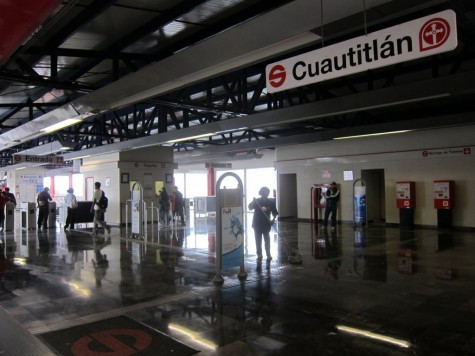
It’s not even near the edge of the city, but it’s a start.
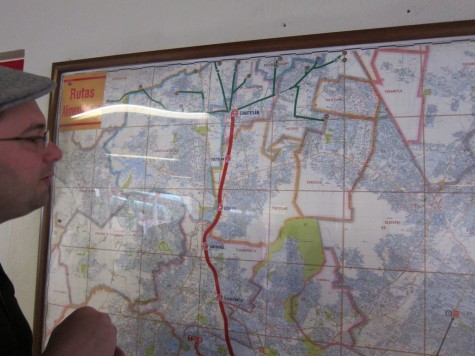
The train ends in a giant big-box-store-architecture kind of terminal, with a mini-mall.
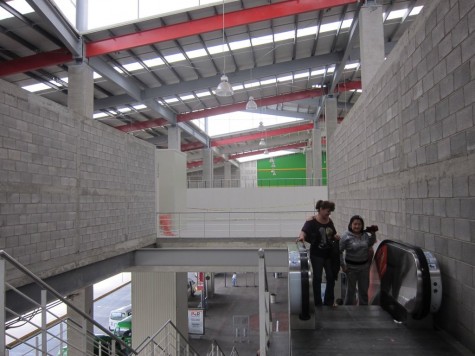
The mall is pretty normal: grocery store, couple of phone stores, a Ticketmaster outlet, a popsicle vendor. Oh, and a pawn shop with the cutest logo ever.
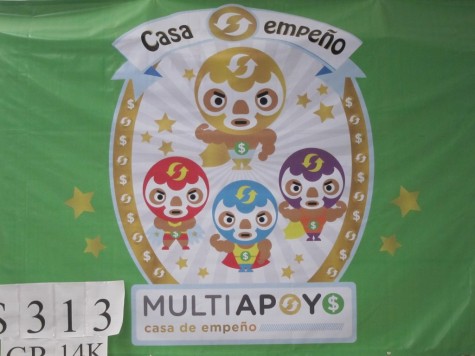
Another sign this mini-mall is not in America: the sex shop.
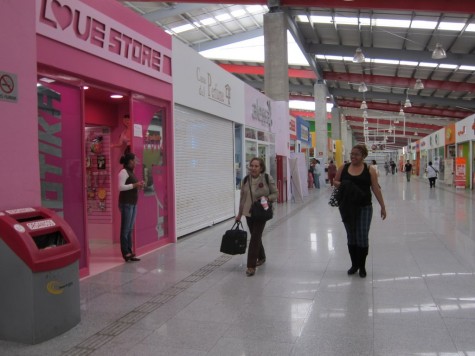
We finally wandered out into the real world of Cuautitlan. It looked pretty much like every midsize, reasonably prosperous Mexican town.
There’s a church, and some topiary. And a park with a clock tower.
There’s some architecture that looked like it could be in Astoria.
We ate some remarkably scrumptious esquites–corn off the cob, with chile, cilantro, cheese and a huge gob of mayo. (Note to Yucatan esquiteros: Up your game, dudes.)
It was starting to rain, so we high-tailed it back to the station, briefly stopping to do the math on how much our dream house would cost us here in Cuautitlan.
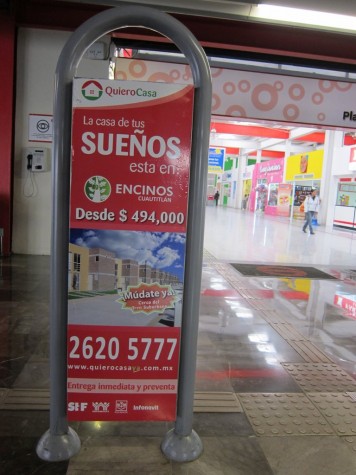
We sat back on the train and watched the rainstorm roll in.
By the time we got back near the center, Mexico City felt a little smaller. Barely.
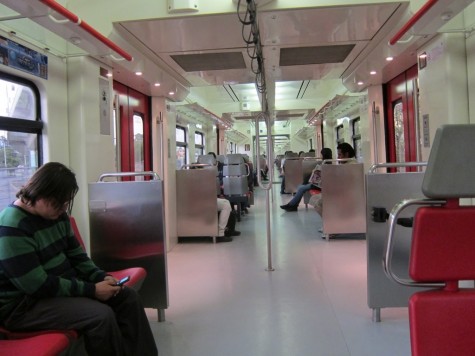
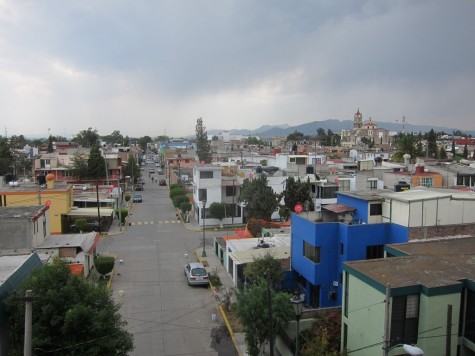
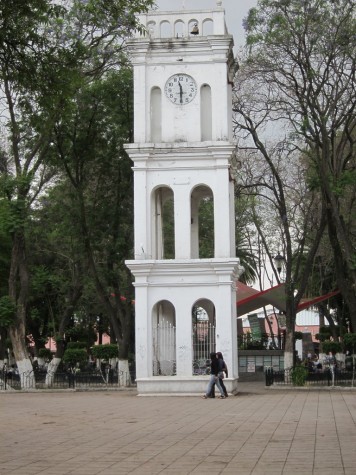
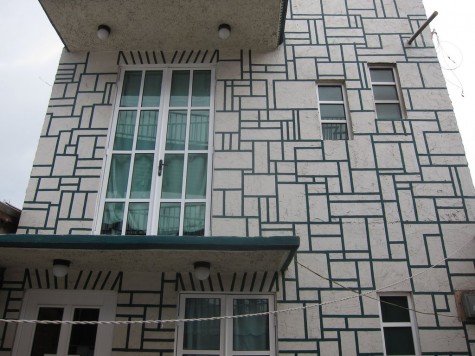
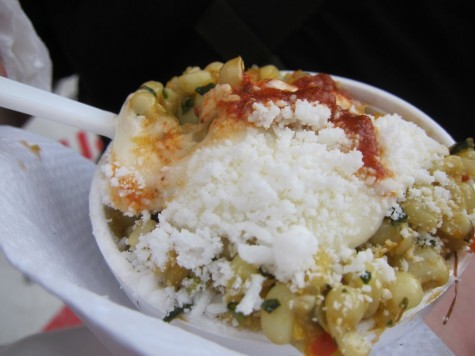
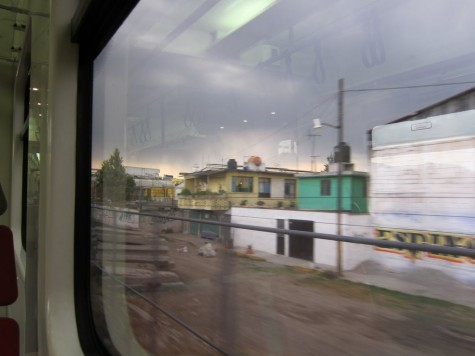
That’s a really interesting way to do it. I love it. The tourist places or the end of the line. It’s all new and interesting.
We would’ve done more touristy places, except everything was closed for Easter week! Oh…who am I kidding. No, we wouldn’t have done anything but drink more coffee and tequila.
Z–Any idea of what the two different logos on the metro mean? I can only imagine that the one on the left is the metro logo, and the one on the right … ? Maybe it means that there are connections to other systems? The look of the font reminds me of the Madrid Metro, although I’m sure that that’s just based on the London Underground (given the Metro de Madrid’s choice of logo.)
AV, you’re talking about the second photo? The logo to the left of the station name is a red ‘s’, I assume for ‘Tren Suburbano’, the light-rail line. There’s something special about the light-rail that I can’t remember, in addition to it being new (it’s privately run? Peter would know).
The logo to the right of the name I guess is the Cuautitlan stop icon. All the stops on the Mex City metro have icons (as I imagine you know), and though I can’t specifically remember, I think the tren suburbano stops must have them too. (I have another post coming up that shows some of the metro icons.)
What makes you think I could answer the geeky transit question? OK… who am I fooling?
The logo on the left is an S for Tren Suburbano. It’s currently a one-line system, but it’s expanding. This is the new (2007?) commuter train line that leaves out of Buenavista Station, which used to be the main station back when Mexico actually had passenger trains (which they did until 2000 when they privatized the trains).
The logo on the right is the station pictogram. All stations in Mexico City have a picture logo. This one is know… something to do with a church. Because this town… has a church? Hey, give them a break. There are already hundreds of stations. Pickings got a little slim by the time they built out to Cuautitlan.
The Tren Suburbano is not to be confused with the little light rail line, el Tren Ligero, which runs in the south of the city from the end of a metro line to beautiful Xochimilco, where the canals are. The light rail is the last remnant of Mexico City’s streetcar system. The rest of that system has been converted/downgraded to overhead-wire electric buses.
There’s also the Metrobus, which is the new fancy high-speed city bus with elevated station platforms, dedicated lanes, and a pay before you board system.
And then of course there’s the whole metro system.